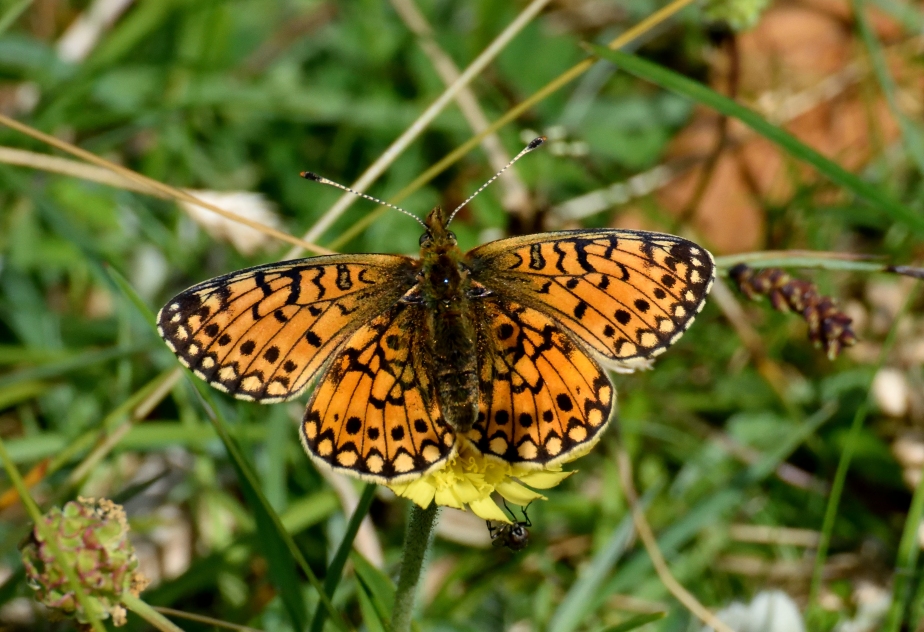
June 2017.
To visit a new area is always exciting, you never know quite what you will see.
I have never been to Cumbria so plenty of research was needed. I only had a few hours so they had to be well spent. My number one choice was Arnside Knott. Mid June is a bit early for the specialities this site is known for but you never can tell. Friday was grey and windy but Saturday was beautiful weather.
The Knott is a 500ft high limestone hill overlooking the Kent estuary. It has wooded areas, open flower filled grassy glades, scrub and scree, with stunning views in all directions. It was a lovely day and you could see the peaks of the Lake District which were named on the toposcope near the summit,quite beautiful.
The first butterfly I encountered was a Small Pearl Bordered Fritillary, which turned out to be the most numerous. In the sunshine they shine like polished gold.
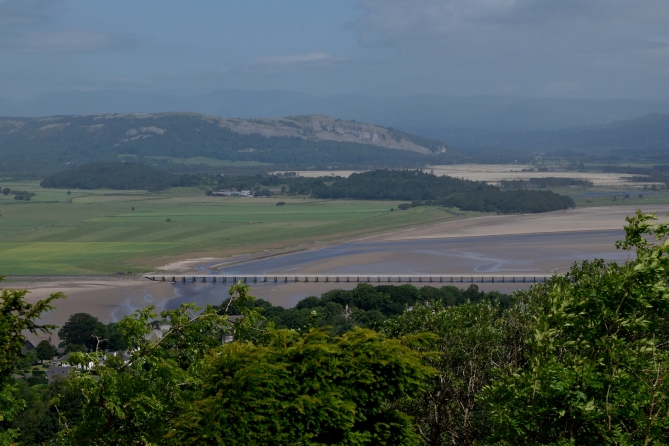
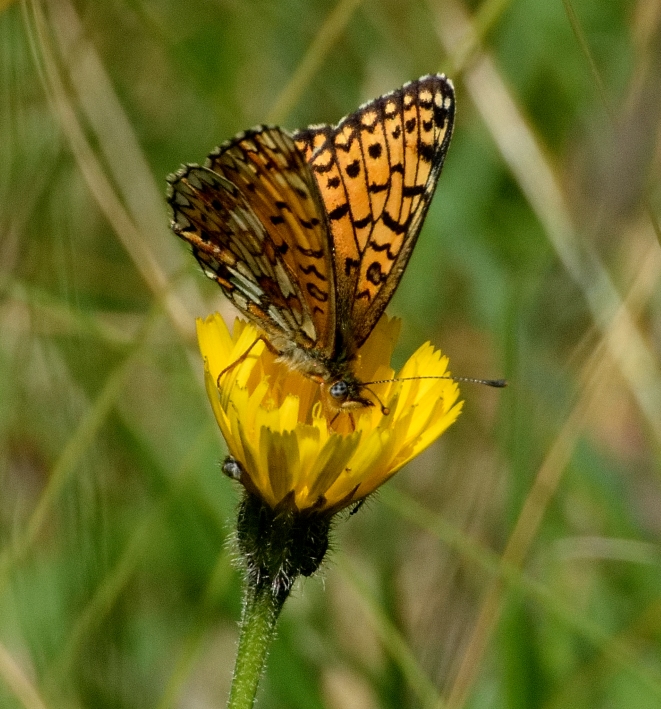
There was a good number of Small Heath also an early Grayling and a fly through Dark Green Fritillary which was not going to stop to have its piccy taken.
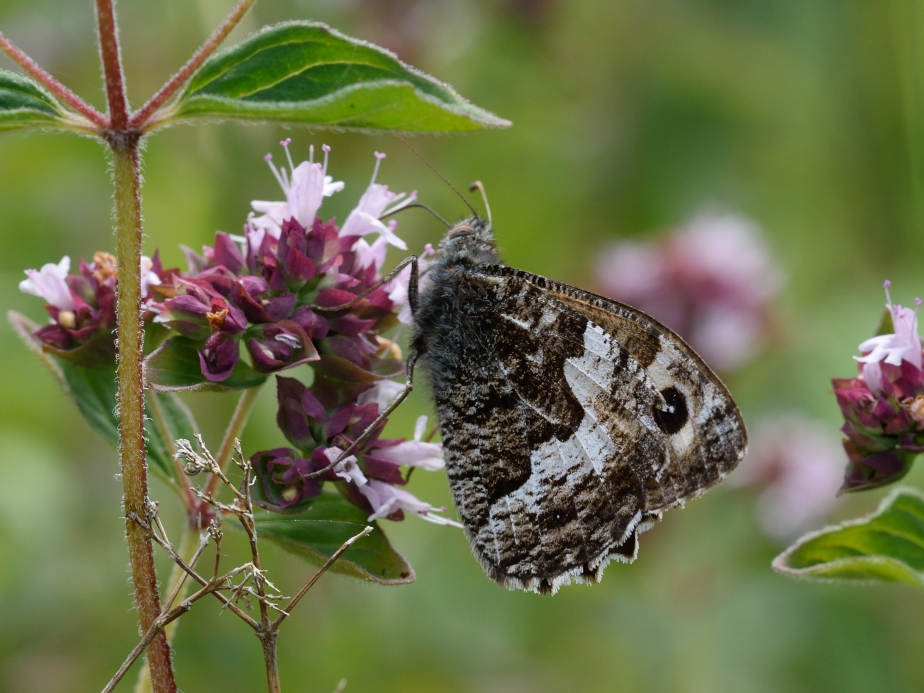
Then it was onto Meathop Moss on the north side of the estuary. This is a rare habitat of raised peat bog with interesting plants like cotton grass and insect eating sundews. The target here was Large Heath. Seeing the butterflies was no problem, getting a half decent shot was another matter! They hardly ever settled, covering miles. When they did stop they were very distant from the board walk or deep in the vegetation. I persevered and finally got a reasonable image and bitten by two ticks!
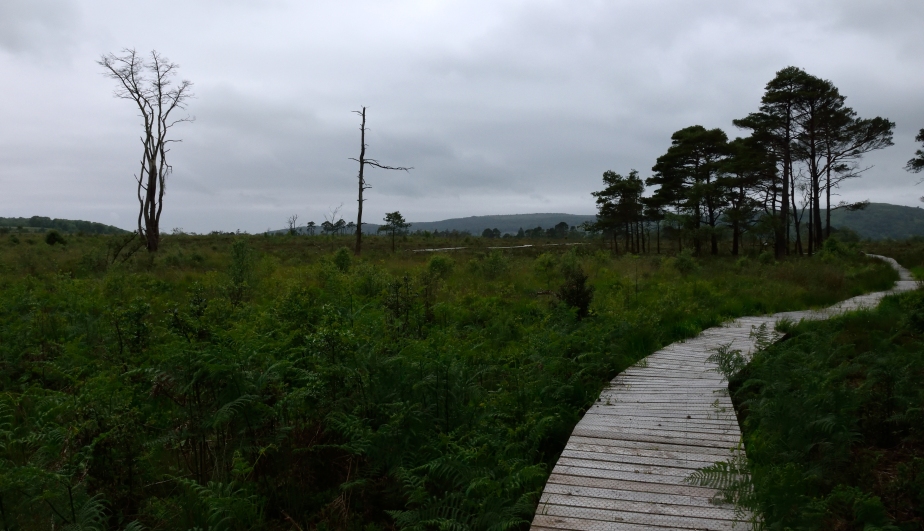
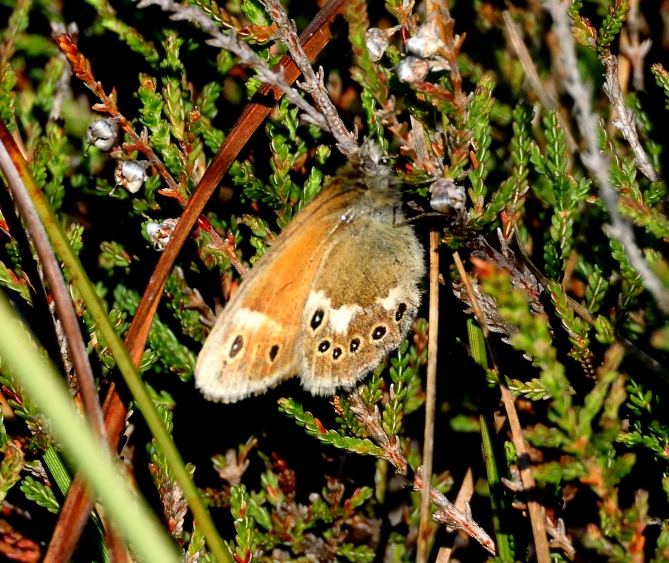
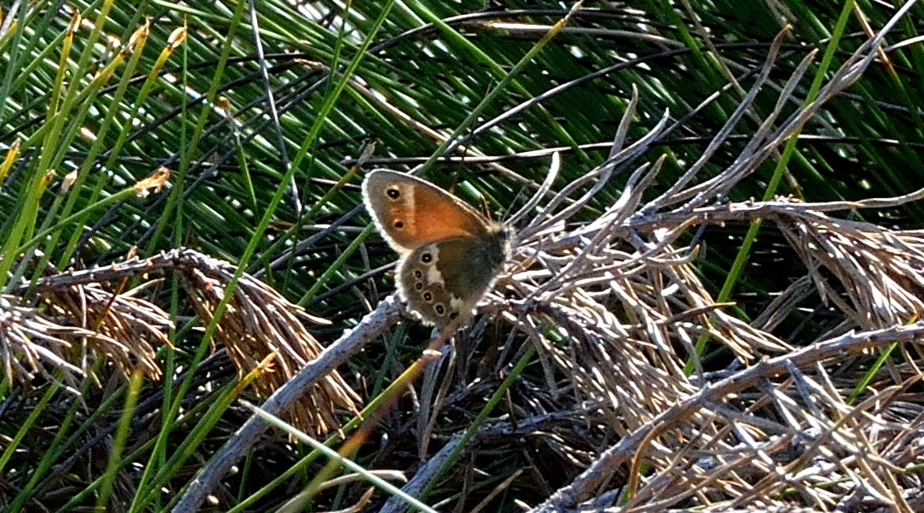
July 11th 2018 and a return visit to Cumbria.
Two targets were planned for this holiday. Luck was on my side as I found my most wanted on the first day when I visited Latterbarrow nature reserve near Witherslack. I was hoping for Northern Brown Argus when Tina spotted a fritillary floating around, a High Brown Fritillary, one of the UK’s rarest and most threatened species. It settled to nectar on thistles allowing me to photograph both upper and, more importantly, the underwing. This allows positive i.d from the similar, and commoner, Dark Green Fritillary. Although the wings had slight damage I was thrilled.
Day two and a return to Arnside Knott. Although we searched the lower areas that had been recommended for both Fritillaries and Northern Brown Argus, we had no luck. So we climbed to the summit. Due to this fabulous summer the vegetation was parched brown. Many common species of butterfly abounded but few flowers except in shady areas. While photographing a Grayling nectaring on marjoram (an unusual sight) a small butterfly caught my eye, a Northern Brown Argus! In all we found six, but all looking a bit worn, the hot weather has made everything early.
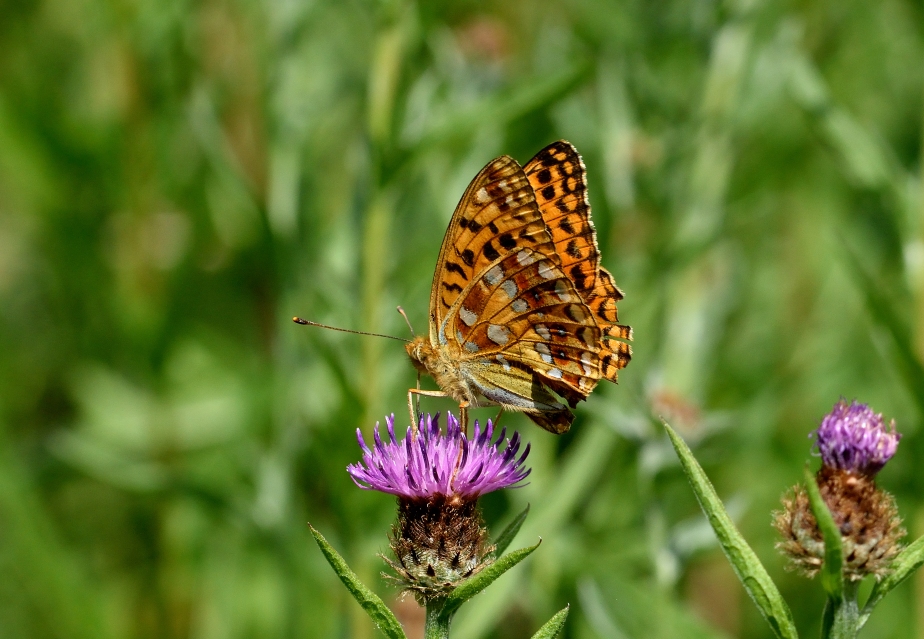

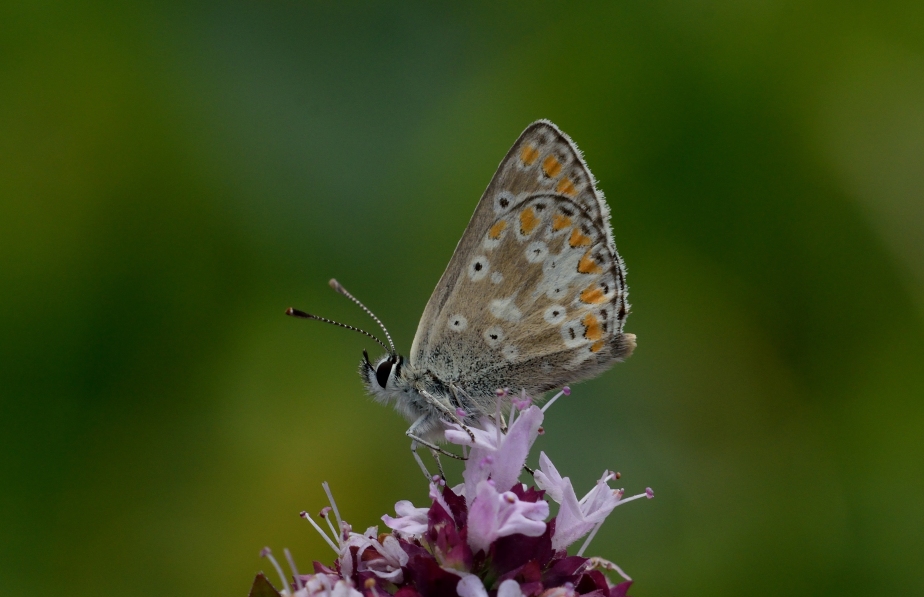

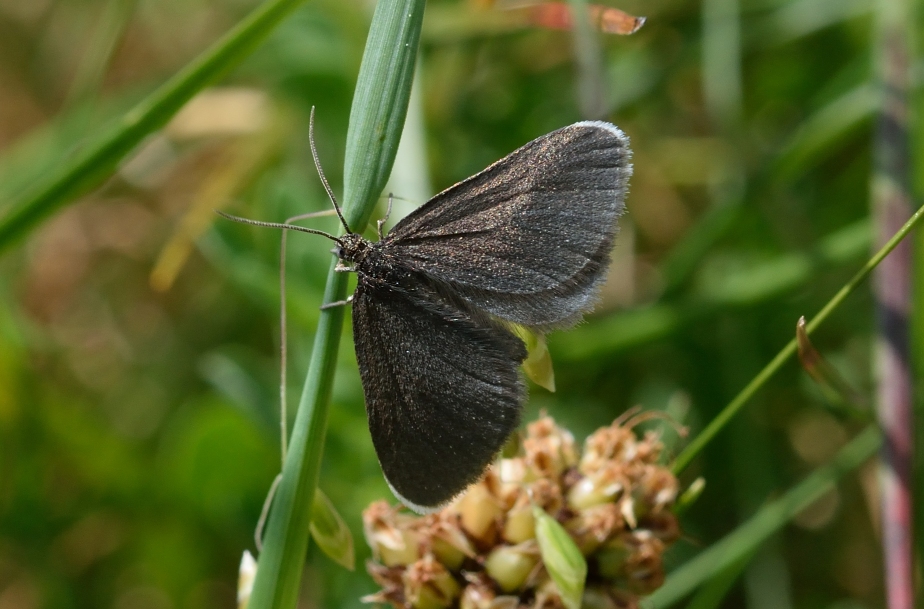

A few Dark Green Fritillaries appeared, all females, looking for egg laying sites. And a tantalising very dark butterfly which frustratingly would not settle, I’m sure this was a very early Scotch Argus.
Day three and it rained! So we did the touristy thing and drove round Lake Windermere and Coniston Water.
July 7th 2019
A five day break this year, however we had several days of rain and gloom. The first day was fine and we visited Hutton Roof Crags which is about two miles south of Kirkby Lonsdale. This is an area of limestone pavement and had large areas of bracken. Up to fifty large fritillaries were quartering the site. They were all on a mission and I only saw two nectaring on bramble both were Dark Green Frits. It is possible there was a High Brown Fritillary among them but in flight almost impossible to tell apart. Four Small Pearl Bordered Fritillaries were seen one of which looked quite fresh but again they were not stopping. Nice to see a Painted Lady up there after the big influx in mid-June also several very pretty little Chimney Sweeper moths.
Monday morning and the annual pilgrimage to Arnside Knott. Lots of flowers this year thanks to the more ‘normal’ weather. Sadly not a great amount of butterflies. Ringlets were the most numerous but very few Meadow Browns seen and only five or six Grayling. I think last years drought has had a big effect on these species that breed on various grasses. Two or three large Frits bombed through at 100mph and I found a couple of Northern Brown Argus.
The sun eventually broke through on the last afternoon so spent an hour at Latterbarrow. The reserve was a riot of colour with a lovely showing of wild flowers but like the Knott few butterflies. After a thorough search eventually found a Northern Brown Argus. Very pleased with this specimen as it had the white dots on the upper wing, the first I’ve seen.
A word of caution when visiting this area. There are a large number of ticks on the reserves. Make sure you take adequate precautions. Despite plenty of deet spray repellent and no bare skin I still manage to get the odd one! Make sure you remove them completely and treat the bite with an anti-bacterial cream.

Great photos of my Cumbrian butterflies (OK – not “mine”, obviously, but I live up here so it’s nice to have them named – thank you, Kathy.
LikeLiked by 1 person
Thanks Kathy appreciated, wish I could have spent more time there, so much to see lovely part of the world.
LikeLike
Very beautiful butterfly shots 👍, even though I have no idea where Cumbria is 😄
LikeLiked by 1 person
Hi Frauke, Cumbria is in the North West of England. It is also called the Lake District and is considered one of the most beautiful areas in the Country. For me it’s butterflies I would not see in my County.
LikeLike
Ah, thanks very much for your information ☺
LikeLiked by 1 person